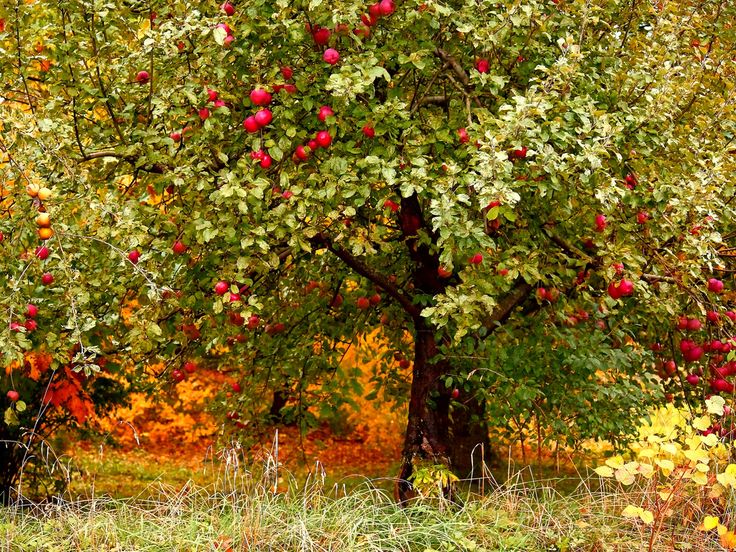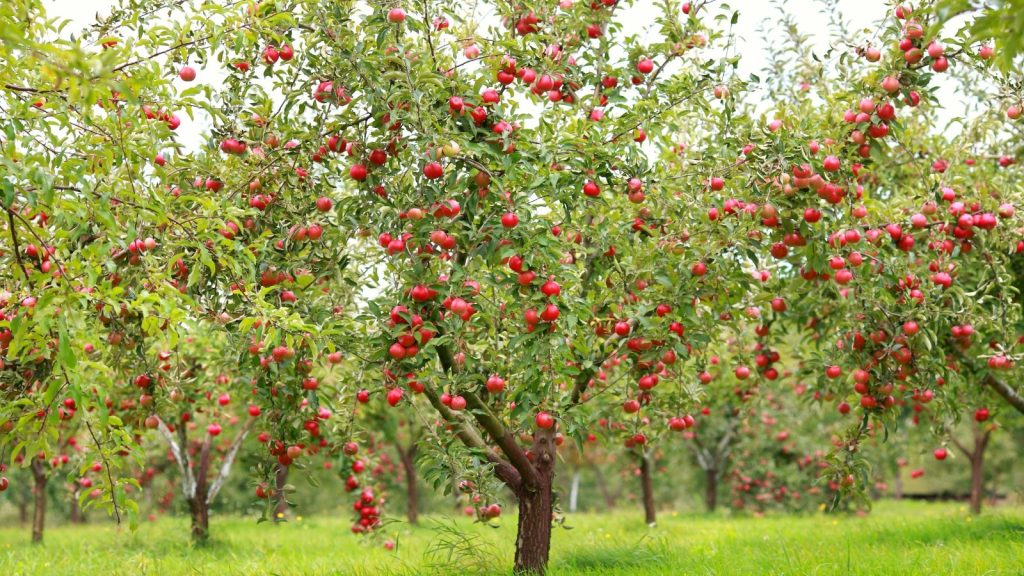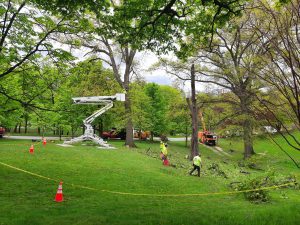Exploring the practice of planting fruit trees in the fall provides a unique opportunity to improve landscapes while reaping the benefits of seasonal timing. Understanding the subtleties of fall planting, particularly in areas like Houston Heights, is critical for effective fruit tree establishment and growth. Read the full post to learn if Can you plant fruit trees in the fall.
Benefits of Planting Fruit Trees in the Fall
Planting fruit trees in the fall has many benefits for both the tree and the gardener. Cooler temperatures in the fall produce ideal conditions for root growth, making it easier for freshly planted trees to establish themselves. Furthermore, fall planting gives trees enough time to acclimate to their environment before the dormant winter period, resulting in healthier development the following spring. The moist soil conditions of fall also contribute to optimum hydration for young trees, decreasing the need for frequent watering. Gardeners who take advantage of fall planting can give their fruit trees a head start and reap the benefits of many harvests for years to come.
Can you plant fruit trees in the fall?
Yes, you can plant fruit trees in the fall. Fall planting offers several advantages, including cooler temperatures and moist soil conditions, which promote root establishment. Planting in the fall allows trees to acclimate to their new environment before winter dormancy, setting the stage for vigorous growth in the spring. By selecting healthy trees and providing proper care, fall-planted fruit trees have the opportunity to thrive and produce abundant harvests in the seasons to come.

Ideal Fruit Trees for Fall Planting
Choosing the best fruit trees for fall planting necessitates taking into account a variety of aspects, such as climate compatibility, available space, and personal preferences. Several fruit tree varieties flourish when planted in the fall in warm, humid places such as Houston Heights. Native fruit trees like figs and persimmons, as well as citrus trees like oranges, lemons, and limes, are ideal for fall planting in this area. These trees are well-suited to the local climate and soil conditions, making them more likely to thrive. Additionally, deciduous fruit trees such as apples, pears, and peaches can be planted in the fall if they receive ample sunlight and well-drained soil. When choosing fruit trees for fall planting, consider elements such as tree size, pollination requirements, and fruit quality to guarantee a healthy and fruitful harvest in future seasons. Gardeners who select the appropriate fruit trees for fall planting can build vibrant orchards and enjoy a harvest of fresh fruits for years to come.
Site Preparation for Fall Fruit Tree Planting
Preparing the planting location is critical for a successful fall fruit tree planting. Begin by testing the soil’s pH and nutrient content. To guarantee that fruit trees grow successfully, amend the soil as needed. Ensure that the planting area receives enough sunlight and has good drainage to avoid waterlogging, which can impede root growth. To give the fruit trees enough room to grow their roots, remove any debris or competing plants. By carefully preparing the site ahead of time, gardeners can provide an ideal habitat for fall-planted fruit trees to thrive and deliver copious harvests in the coming seasons.
Step-by-Step Guide to Planting Fruit Trees

Follow these instructions to successfully plant fruit trees: Choosing Healthy Purchase disease-free, well-branched trees from respected nurseries. Look for trees with strong root systems that show no symptoms of injury or illness. Choosing a Planting Location: Choose a sunny site with well-drained soil. Ensure that the area is large enough to suit the tree’s mature size. Digging the Make a hole twice as broad and as deep as the tree’s root ball. Loosen the soil inside the hole to encourage root growth. Place the tree in the center of the hole, with the root collar slightly above ground level. Backfill the hole with soil, and carefully tighten it around the roots. After planting, properly water the tree to settle the soil and hydrate its roots. Continue to water often, especially during dry conditions. Apply a layer of organic mulch around the tree’s base to conserve moisture, discourage weeds, and regulate soil temperature. Staking (if necessary): If the tree is top-heavy or prone to wind damage, secure it to give it support until it grows roots. Following these measures will ensure the successful establishment and growth of your newly planted fruit trees.
Related Posts:
Common Mistakes to Avoid
To preserve the long-term health and profitability of fruit trees, avoid these typical mistakes while planting them:
Planting Too Deep: Avoid planting trees too deeply, as this can smother the roots and stunt growth. Ensure that the root collar is slightly above ground level.
Overwatering: While adequate hydration is necessary, overwatering can cause root rot and other problems. Water trees deeply but seldom, leaving the soil to dry between waterings.
Ignoring Soil Quality: Neglecting soil testing and preparation might lead to poor tree growth. Adjust the soil as necessary to maintain optimum drainage and nutrient availability.
Planting at the Wrong Time: Planting too late in the fall or too early in the spring might cause stress on the trees. For the best root establishment, plant early to mid-fall.
Neglecting Pest and Disease Management: Failure to manage pests and diseases on time might jeopardize tree health. To reduce dangers, trees should be monitored regularly, and preventive measures should be implemented.
Avoiding Mulching: Mulch helps to retain moisture, reduce weeds, and control soil temperature. Skipping mulching can result in increased water loss and weed competition, limiting tree development.
Avoiding these blunders will pave the way for successful fruit tree planting and a plentiful crop for years to come.
FAQs
Is it possible to plant a fruit tree in the fall?
You can plant many fruit trees in the fall, but it’s crucial to choose varieties that are compatible with your local climate. Some fruit trees may thrive best when planted in the spring.
How can we protect fruit trees planted in the fall from frost damage?
When the weather turns chilly, use burlap or frost cloth to protect fruit trees planted in the fall from frost damage. Adding a layer of mulch around the tree bases can also aid in protecting the roots and insulating the soil.
Can you plant citrus trees in the fall?
Citrus trees can benefit from fall planting, particularly in areas with mild winters. Planting citrus trees in the fall allows them to establish their root systems before the arrival of cold weather.
Do fruit trees planted in the fall require fertilization?
Fruit trees planted in the fall are generally not advised to be fertilized since too much fertilizer may encourage new growth that could be susceptible to frost damage. Instead, concentrate on giving enough mulch and water to encourage root establishment.
Conclusion
Finally, planting fruit trees in the fall is a fantastic opportunity for gardeners to develop healthy orchards and reap plentiful fruits for the future. Trees can grow healthy root systems and adjust to their new surroundings before winter dormancy occurs by taking advantage of the milder temperatures and wet soil conditions of the fall season. Gardeners can ensure the success of their fall-planted fruit trees and reap the rewards for years to come by following proper site preparation, planting practices, and continuous care. Roll up your sleeves, grab your gardening tools, and set out on a journey of fall planting to build a bright and fruitful landscape for yourself and future generations to enjoy.
SEO Meta Description: Discover the benefits of planting fruit trees in the fall and get expert tips for successful fall planting in Houston Heights. Learn about the ideal fruit trees for fall planting, site preparation, step-by-step planting guide, common mistakes to avoid, and FAQs.




